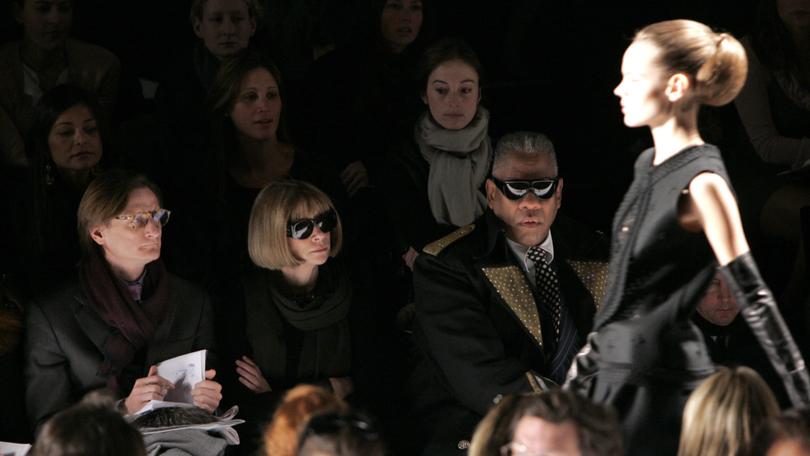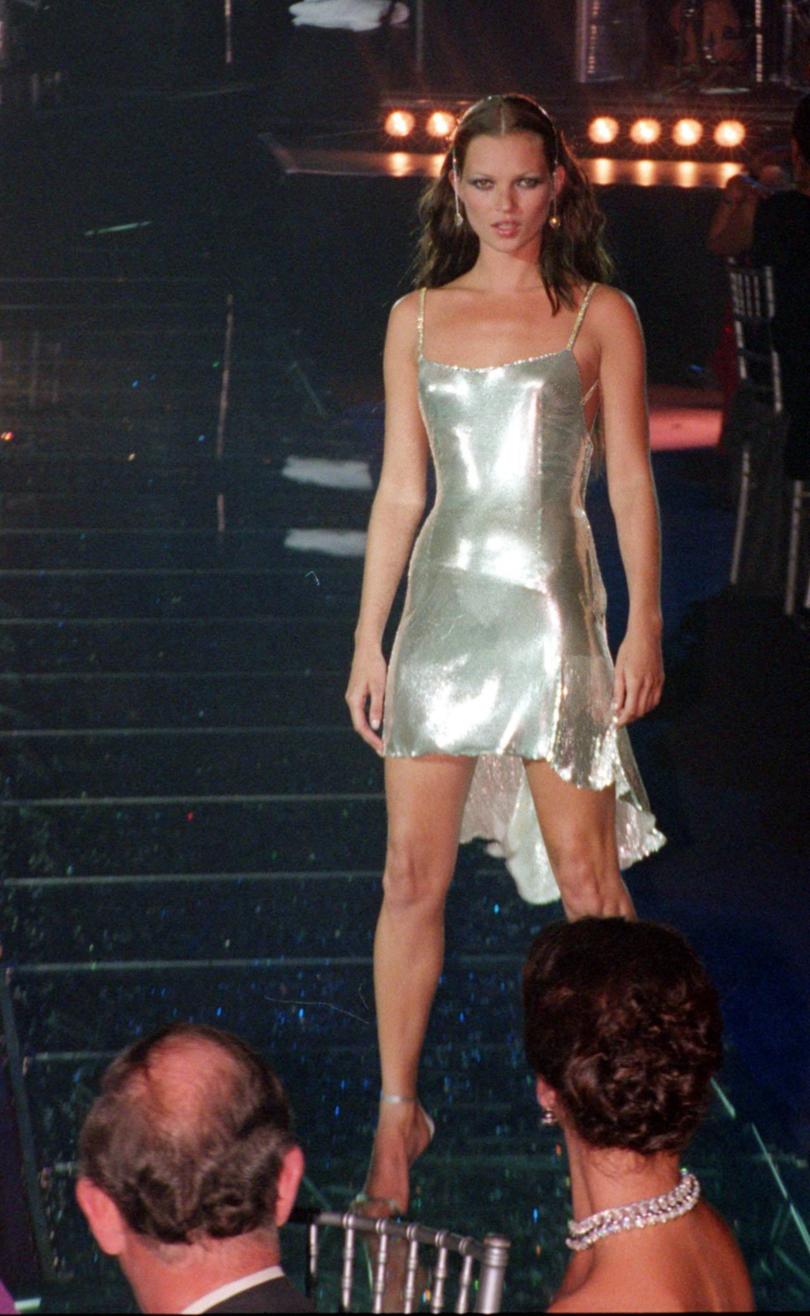Has Ozempic killed off the plus sized model?

The other day, I was rummaging through boxes of papers and discovered a copy of the letter I wrote in 2009 to the most influential fashion designers.
It asked them if they would consider providing larger sample sizes, so that we at Vogue could photograph a wider range of body sizes in their clothes.
“We have now reached a point where many of the samples simply don’t fit even many of the established healthier looking models and we are having to use girls that look emaciated to fit them.”
Sign up to The Nightly's newsletters.
Get the first look at the digital newspaper, curated daily stories and breaking headlines delivered to your inbox.
By continuing you agree to our Terms and Privacy Policy.I added that “this current trend of very thin girls is out of step with how the general public feel and therefore is irresponsible and, at the end of the day, does not help any of us.”
The letter was written out of frustration after too many cases where I couldn’t get hold of designer clothes that would fit any of the women we wanted to photograph unless we called in shop stock.
On one shoot, even Kate Moss was struggling with the sample sizes.

Looking back, I am surprised by how forthright I was to these designers whose work I admired, including Miuccia Prada, Vivienne Westwood, Nicolas Ghesquiere and Paul Smith, finishing off with a brutal, and unconciliatory, “I wanted you to know my views and how damaging I feel the current state of affairs is to all of us”.
But I didn’t feel conciliatory.
I was fed up with our fashion shoots being dominated by many of the models of that time, young women, who may or may not have been perfectly healthy but looked achingly slim with their Bambi legs and scimitar collarbones.
I was tired of defending their appearance to critical newspapers and tired of the pointless government debates that made not a jot of difference.
I wanted to change things but I needed to bring the whole fashion ecosystem of designers, photographers, model agents and fashion editors with me.
Which was a considerable and, in the end, unachievable task.
At the time, many of the designers replied politely to my letter, yet their response was often evasive and I don’t recall anyone acknowledging that their catwalk models were not just thin but exceptionally so.
It was the size of the catwalk models that was so important to me because it determined the size of the samples that we were sent and, therefore, the choice of women we could photograph them on.
The recipients of my letter clearly did not feel that there was a problem.

Fifteen years on, not a great deal has changed if the statistics published earlier this month by a report on size inclusivity by Vogue Business demonstrate.
Of the 8800 looks shown in Paris, Milan, London and New York during the last fashion weeks, just over 3.5 per cent were shown on models larger than what is now known as “straight size” — an American 0-4, or up to a UK size 8.
There were a smattering of plus-size models who bust the 16 mark and a few in a category I have just discovered is known as “mid-size”, a UK 10-12 which was regarded as making a big gesture to body positivity.
There appeared to be a brief moment a few years back when a plus-size girl was a trophy to be displayed on the catwalk but the numbers are shrinking.
The so-called plus-size girls were never more than tokens — even at London Fashion Week, which has the best record on using larger models showing 45 in 2022, nearly double that figure last year and only down a fraction this spring.
But in the latest raft of autumn/ winter shows, Versace who used the American curve model Precious Lee in its Spring/Summer 24 show, featured no such plus size girl this season.
Likewise, Balmain which included plus size superstar Ashley Graham in Spring/Summer 23, had no plus-size models at all on its latest catwalk.
This week, Gucci showed its cruise collection at London’s Tate Modern and it was like going back to the ironing board models of the 1990s.
The body positive trend wasn’t without its critics.
The majority of women are not as large as a plus-size model, just substantially larger than the straight-size models.
And plus size and curve models are, in their own way, if used as role models, just as complicated a problem as skinny girls with obesity a growing issue throughout the Western world.
Although the body positivity movement would encourage us all to love ourselves whatever shape or size, the odd plus-size girl on a catwalk is frankly neither here nor there when it comes to the way we feel about size.

I edited British Vogue for 25 years and I understand the complexities of the issue as much as anyone.
I spent hours in debates about whether slim models exacerbated eating disorders and would be discussing on an almost daily basis whether a model suggested for a story was too thin, or when the pictures came in, that she looked too thin.
But I did understand why so many photographers, stylists and designers were hooked on thin.
Clothes fall perfectly, there was an otherworldly element to those models that separated them from say one who might feature in a mail-order catalogue who would be much closer to a real women.
They often did look absolutely beautiful and many of them were healthy and well-adjusted.
And, of course, we live in a society which admires and, to some extent, fetishises thinness and has done so since the end of the First World War.
Models don’t create problems in society but they can they reflect our pre-occupations.
In recent years, it was claimed the body positivity movement was gaining ground, urging us to embrace a diversity of shapes and even to celebrate being — let’s be brave and call it — fat.
In April 2023, my successor at Vogue, Edward Enninful, was a cheerleader and ran a cover of three large models Paloma Elsesser, Precious Lee and Jil Kortleve with the headline The New Supers.
Their beautiful faces topped their curves, which were squeezed for emphasis into skin-tight dresses.
It didn’t make much difference that, in reality, the most successful models Gigi Hadid and Kendall Jenner were as thin as their forebears, but I admire him for commissioning that shoot.

Back in 2016, when I put plus size model Ashley Graham on the cover, it was almost impossible to get designers to send clothes.
They either didn’t have any that would fit, or they didn’t wish them to be showcased on a larger woman.
I was so grateful to Stuart Vevers at Coach for coming up last minute with a studded leather biker jacket that we ran on the cover. She looked wonderful but, even so, it was cropped above the waist.
We didn’t run one of the full-length images that was inside, as I was too nervous about whether it would sell.
Now I wish I had. It was the same when we shot singer Adele in 2011 and ended up using a close up headshot, although I don’t blame myself that time.
The team on the shoot couldn’t get their head around styling someone of her size for the cover.
Their ideas of what looked good and what looked Vogue didn’t allow it. Although I had specifically wanted to showcase this amazing singer in her full glory, I was presented with a series of headshots.
Again, there was the beautiful face with dramatic dark eyeliner, tumbling tawny curls and pale lipstick, but not a single frame that showed her whole body.
Now another major player is revealing our true attitudes to our bodies — the rush for Ozempic and the other semaglutide weightloss jabs are symptomatic of a society that still craves thinness.
While on one hand many women (and men) talk the talk when it comes to the wisdom of refusing to bow to the tyranny of weight obsession, most of us can’t escape it entirely.
Ozempic, a drug developed to treat diabetes, is now the drug of choice for those who want to lose just the perfect amount of weight in a matter of weeks.
No diet necessary. Just a little self-administered jab in the tummy.
No silly starvation. Just a chemically recalibrated appetite.
When Oprah Winfrey, whose millions of fans loved the fact she had an everywoman battle with her weight (she was previously on the board of WeightWatchers), opened up and said she had started taking Ozempic, the ground rules shifted.
It was a big moment because it turned the debate away from accepting our natural shapes to using a drug to control them.
If Oprah is taking it, then perhaps it’s not OK to be fat, after all.
And, of course, while Oprah and, more recently, Sharon Osborne have confessed to their Ozempic habit, there are hundreds of glamorous celebrities who are not prepared to own up to it being the reason for their even more refined bodies.

In the real world, a growing number of women who are, by any standards, successful, confident, intelligent and attractive, are in thrall to the drug. And they don’t care who knows about it.
They are evangelists for what they consider a simple solution that allowed them to drop several dress sizes. Per sonally I haven’t succumbed, even though most days I wish I were 3kgs lighter.
And it’s frustrating when so much beautiful high fashion isn’t available in anything larger than a size 12.
A quick look at some online sites the other day confirmed how many brands don’t appear to want to cater for any average size 16 British woman.
YSL has a linen pencil skirt to die for that is unavailable above a 12.
Gucci, where the logo-heavy collection of Sabato de Sarno is so far failing to help boost its figures, seems to offer hardly anything much larger than 12.
Might it sell more if they had bigger sizes? It clearly doesn’t think so.
Contrast this with more affordable British brands who are realistic about customer sizes.
Jigsaw’s Peony skirt and linen trousers go up to size 18, John Lewis has a black broderie anglaise dress available in size 20 while Boden, offers a Sangria Sunset Tea dress up to size 22.
It’s noticeable that Victoria Beckham’s recent line for Mango cut off at a size 14, the same as her main designer line, even though Mango routinely offers clothes up to 22.
But women designers are not necessarily their own sex’s friend when it comes to the size issue.
Miuccia Prada, a woman whose style I admire, uses the skinniest girls on her catwalks, nor do I detect much difference in the look of the catwalk models at Chanel since Virginie Viard took over from the famously fattist Karl Lagerfeld.
Ultimately, it’s unlikely there’s going to be much of a change in the size of models and the attitude of designers, unless there’s a radical re-thinking of the way we want to look.
And, frankly, the weightloss jab, has put paid to that.
